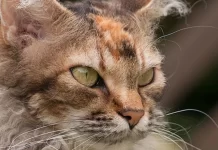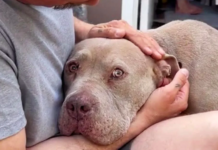Last Updated on August 18, 2023 by Fumipets
Cat Cataracts: Everything You Need to Know
Cat cataracts are a medical condition that affects the lenses of a cat’s eyes, leading to cloudiness and decreased vision. Cataracts can develop due to various factors, including age, genetics, diabetes, and certain infections.
While cataracts can cause vision impairment, they might not necessarily result in complete blindness. Treatment options for cat cataracts include surgery to remove the affected lens, but the decision for surgery depends on factors such as the cat’s overall health and the severity of the cataracts.
Cat Cataracts
Your cat may have cataracts if you observe him moving slowly, hesitantly entering his catio, or reluctantly jumping onto his favorite chair. This is particularly true if the senior cat is older than 10 years old. Additionally, you can see haziness or cloudiness in your cat’s eyes. Cataracts seldom result in complete blindness in cats, but they may impair how well your cat sees the outside world.
What Are Cataracts?
A cataract is a change in your cat’s lens that prevents light from reaching the retina, which houses their vision cells, in that eye. The majority of cataracts begin tiny, but they may develop and expand to a density that impairs vision. Some cataracts remain static rather than growing. The little eyesight loss caused by such cataracts is readily adjusted by cats.
A lens alteration known as nuclear sclerosis often occurs as people age. This issue often manifests simultaneously in both eyes. Although it has a similar appearance (a haziness in the eyes), your cat’s eyesight is typically not significantly affected.

How Did My Cat Get Cataracts?
A hereditary tendency to cataracts exists in certain cats. Younger cats under the age of five might get the eye problem in some cat breeds. In contrast, the majority of cat cataracts appear after age 10.
The following cat breeds have the highest lifelong hereditary risk of developing cataracts:
- Himalayan
- Birman
- Persian
- Bengal
- Russian blue
British shorthair
Cat cataracts may have a variety of reasons, but the most frequent ones are trauma and inflammation. Trauma would result from a head injury, but inflammation might be brought on by many cat illnesses, including the herpes virus. Fortunately, diabetic cats are more resistant to cataracts than either dogs or humans, despite the fact that diabetes is a prevalent cause of cataracts in both!
A comprehensive eye examination by your pet’s veterinarian may identify a cataract. If there is any doubt about whether or not your cat has cataracts, a veterinary ophthalmologist will be recommended.
Treating Feline Cataracts
Several variables will affect how a cataract is treated. Referral to a veterinary ophthalmology expert is necessary for the best course of therapy, which includes performing surgery to remove the cataract itself. To assist restore eyesight, the damaged lens is taken out and replaced with a synthetic one. After surgery, your cat will need to wear a cone to protect the recovering eye and get eye drops initially every two hours.
You may decide against treatment if your cat only has a cataract in one eye. Cats that only have one healthy eye will not experience any discomfort from cataracts. Getting rid of the cataract could not benefit your cat if he has vision-impairing underlying eye issues.
Glaucoma is a side effect of untreated cataracts. of certain circumstances, the lens of your cat’s eye slides out of place and obstructs the flow of ocular fluid. As pressure increases, retinal cell damage may be irreversible. Families often see a “red eye” and see their cat squinting in discomfort due to the pain of glaucoma.

How Can I Prevent Cataracts In My Cat?
There are no tried-and-true home or natural treatments for cat cataracts. However, there are several actions you may do to aid in preventing cataracts from developing in the first place.
Your best option is to give your cat a balanced diet (so he gets enough antioxidants), keep him indoors to decrease the likelihood of trauma like getting struck by a vehicle and reduce the likelihood that he may contract diseases like herpes or feline leukemia that might cause inflammation in the eye.
Questions & Answers:
What are cat cataracts?
Cat cataracts are a condition where the lenses of a cat’s eyes become cloudy, affecting their vision. They can range from minor opacity to complete clouding of the lens.
What causes cat cataracts?
Cataracts can be caused by various factors, including genetics, aging, diabetes, trauma to the eye, or certain infections like feline leukemia virus (FeLV).
Can cataracts in cats lead to blindness?
While cataracts can cause vision impairment, they might not necessarily lead to complete blindness. The degree of visual impairment depends on the size and location of the cataracts.
Is surgery the only treatment for cat cataracts?
Surgery is one option for treating cat cataracts, especially if the cataracts significantly affect the cat’s quality of life. However, the decision for surgery depends on factors like the cat’s overall health and the severity of the cataracts.
How can I prevent cat cataracts?
While some causes of cataracts are beyond your control, maintaining your cat’s overall health, providing a balanced diet, and ensuring regular veterinary check-ups can help prevent or manage certain risk factors associated with cataract development.
Please note that these answers are general and intended for informational purposes. If you suspect your cat has cataracts or any eye issues, it’s crucial to consult a veterinarian for proper diagnosis and treatment recommendations tailored to your cat’s specific needs.


















